HOW TO AVOID A POORLY PREPARED MANE SO BRAIDING IS EASIER
How I can braid a mane with ease ? Get my mane evaluation and preparation formula secrets. You’ll put an end to the majority of your braiding struggles when you learn how to evaluate and prepare your horses’ mane for stellar braiding results.
This is the first post in my series on Mane Braiding Mistakes and how you can avoid them. To view the other posts you can click these links:
HOW TO AVOID LOOSE MANE BRAIDS
HOW TO AVOID UNEVEN MANE BRAIDS
BEST BRAIDING TIPS FROM NOTABLE EQUESTRIANS
If I could do only one favor for you to improve your hunter or button mane braids, I would help you with mane preparation. Unprepared manes are more difficult and time consuming to braid – even for a pro. When I braid a new horse at a show, sometimes the mane hasn’t been prepared for braiding. It might surprise you to learn how I tackle this given that my time is so limited – I have to have all the horses on my list braided ahead of their classes. I’ll explain more about that in a little bit.
But what you need to know is that it’s important to prepare your horse’s mane for braiding based on the mane type. Why? Because it will get you the best braiding results in the least amount of time. So let’s take a look at three different mane types and how you can best prepare them for better and faster braiding. Note: For button braids you can leave your horse’s mane about one inch longer that the lengths I provide below.
Evaluate Your Horse’s Mane
What type of mane does your horse have? Is it thin? Or thick and coarse? Evaluate your horse’s mane so that you can use the best approach for preparing the mane for braiding. To do this I grasp the mane near the withers, in the center of the mane, and then at the poll. If you compare the thickness in each of these areas, you’ll have a good idea of the mane type. Average manes usually get thicker in the middle. Thin manes are generally thin the length of the neck. Coarse or thick manes are usually thick throughout.
How to Prepare Your Horse’s Mane Based on the Type
Most horses’ manes fall into one of the following categories: average, thin, or coarse. Here’s what you need to know about preparing these different mane types.
Average Manes – Consider yourself lucky to work on this mane type! Average manes are not super thick or thin and they are fairly easy to prepare for braiding. If your horse has this mane type, you’ll focus on perfecting the mane thickness and length. So pull the mane in the middle where it is thicker so that the mane thickness becomes more even from poll to withers. Next shorten the mane to about five inches long after clearing the crest. I demonstrate mane pulling, my favorite way to shorten a mane, and some of my braiding secrets in a free video, Five Secrets for Perfect Mane Braids. Click here to sign up for Instant Access to my Free library of braiding videos and resources for riders so you can watch the video.
Thin Manes – If your horse has a thin mane, there’s also good news. You won’t need to pull it. But you’ll need to keep the mane shorter – about four inches long after clearing the crest. (See my tips on mane shortening later in this post.) Since braids on a thin mane have less hair anchoring them, they have a tendency to twist easily. This is especially true when the mane gets long. Keep a thin mane shorter and the braids will lay straight all day. Just don’t go too short or you’ll risk the mane being unbraidable. This photo shows a good example of a thin mane. Good mane preparation of any mane type results in braids that create a horizontal line across the neck and even braid spacing.
Coarse Manes – This is the most difficult type of mane to braid. So proper mane pulling is super important if your horse has a coarse mane. Whenever possible, I prefer to pull a coarse mane a little at a time (over a couple of weeks). Then regrowth doesn’t become a braiding problem later. This strategy is less stressful on your horse, too.
When pulling this mane type, put your focus on thinning the entire mane evenly across the neck, so that it’s manageable for braiding. Don’t over pull the mane or try to make it thin. You’ll create all kinds of braiding issues if you do. Don’t shave or clip the underside in an attempt to thin the mane either. It reeks havoc on your braids because you removed the portion of the mane that anchors the braids. Here’s a hint: Pull the mane after riding your horse. The pores are open after exercise, so the mane is easier to pull. This tip is also helpful for horses that don’t care for having their manes pulled.
There’s another thing you need to know about preparing a coarse mane for braiding. Leave the mane a little bit longer – about six inches long after clearing the crest. The added length makes it easier to braid down tightly. Coarse manes are challenging to braid, but there is an upside. Braids on a coarse mane look amazing in the show ring and they stay put all day. This photo shows a good example of a coarse, thick mane that has been well prepared for braiding.
How You Get the Best Mane Pulling Results
Here’s my mane pulling advice: As I mentioned earlier, I recommend pulling your horse’s mane after exercise because the pores are open and so it’s easier. You should always address the mane thickness first, and the length second. Most manes are thickest in the middle portion of the neck and thinner at the poll and withers. So you’ll want your end results to be a mane that is an even thickness of hair from poll to withers. When thinning a mane, be sure to back comb the hair all the way up near the scalp. Then wrap your pulling comb around the hair close to the scalp. Pull down briskly to remove the hair. This technique allows you to remove the entire hair shaft instead of breaking the hair off. Continue this process working across the mane until the mane thickness is even.
How To Quickly Shorten a Mane Without Creating Blunt Ends
Now you’re ready to shorten the mane to four-to-six inches long after it clears the crest. The length I choose depends on the mane type as I previously mentioned. For an average mane, shorten it to about five inches long after clearing the crest. A metal pulling comb is four inches long so you can use it as a reference as shown in this photo.
One way to shorten a mane is to back comb the hair and wrap the pulling comb around the hair near the hair ends. Then pull down briskly. This breaks the hair off and shortens the mane. But my favorite way to shorten a mane is a technique I learned using an old pair of clipper blades. This method is quick and doesn’t create blunt ends. (Blunt ends make it very hard to tie off the braids.) It leaves the mane perfect for braiding and the mane looks great unbraided too. I demonstrate this technique in a free video – Five Secrets for Perfect Mane Braids. If you haven’t seen the video, just click on the link to sign up for instant access to my FREE library of braiding videos and resources.
So, back to my story about the new horse with the unprepared mane. Even though I’m in a time crunch, what I usually do in this case is take the time to pull and shorten the mane first and then braid it. Why? Because I can do all of these things in less time than it would take me to braid the unprepared mane! And the braiding results will better too. So if you want to braid your horse’s mane quicker and get better results then prepare the mane.
ACTION STEP: So the next time you’re at the barn, evaluate your horse’s mane and prepare it for braiding based on the mane type. You’ll be doing yourself a HUGE favor. Please leave me a comment and let me know how it went!
What is your biggest struggle when it comes to preparing a mane for braiding?
Cheers,
Mary Beth
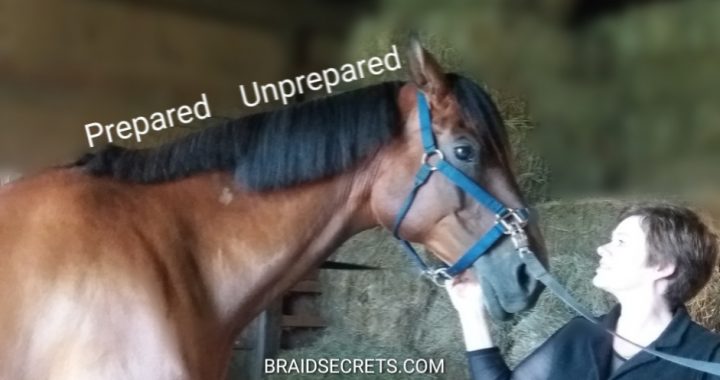
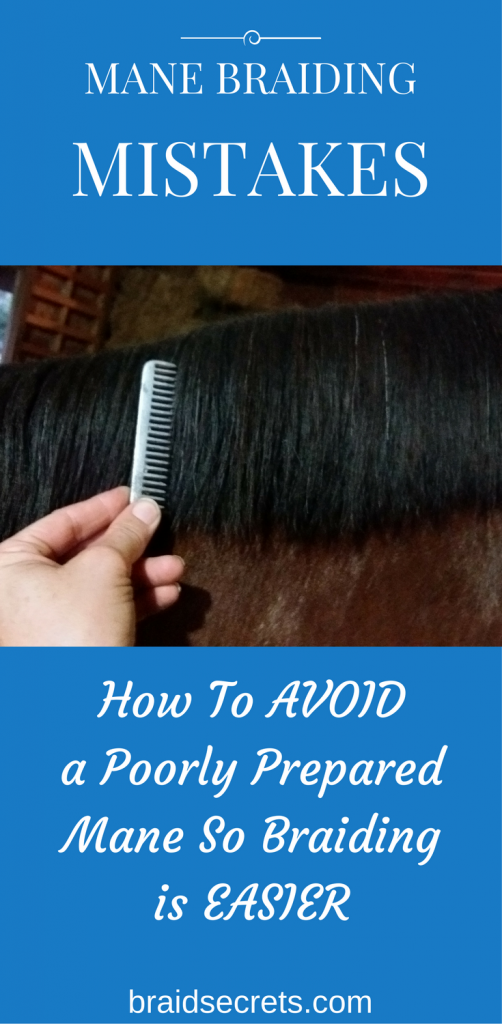
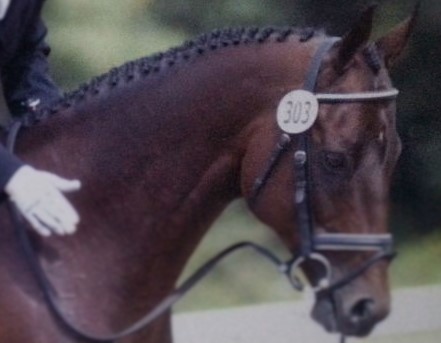
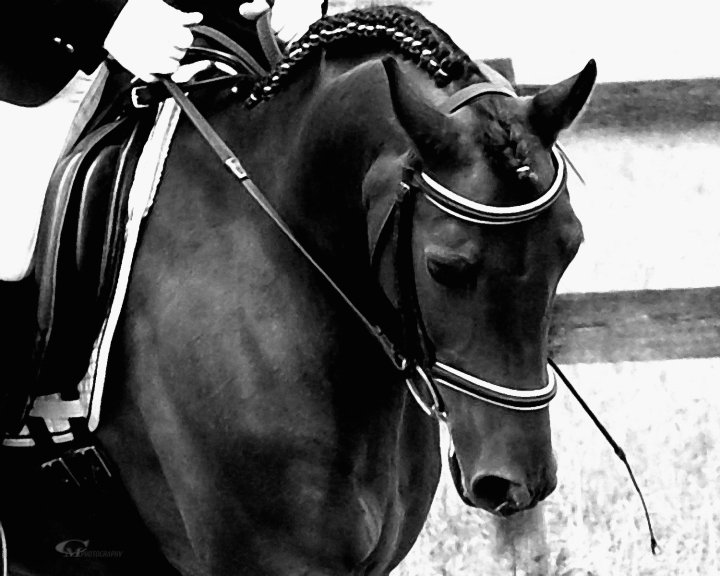
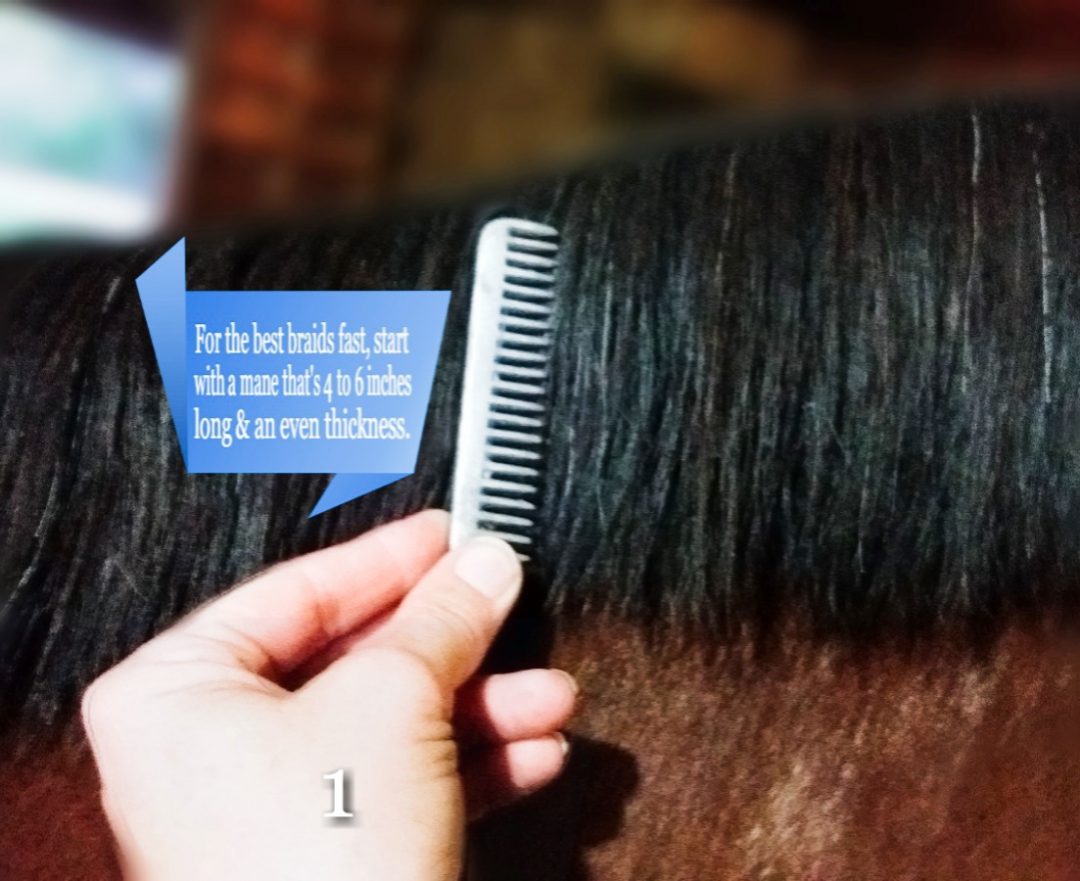
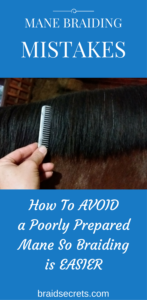
Pingback: MANE BRAIDING MISTAKES - HOW TO AVOID LOOSE BRAIDS - BRAID SECRETS
Pingback: MANE BRAIDING MISTAKES - HOW TO AVOID UNEVEN BRAIDS - BRAID SECRETS
Pingback: THE BEST BRAIDING TIPS FROM NOTABLE EQUESTRIANS - BRAID SECRETS
Pingback: HOW TO AVOID LOOSE MANE BRAIDS SO YOUR BRAIDS ARE NEAT - BRAID SECRETS
Pingback: BRAIDED HORSE MANES: Why, How-to & Expert Advice - Craft Your Best Braids Ever